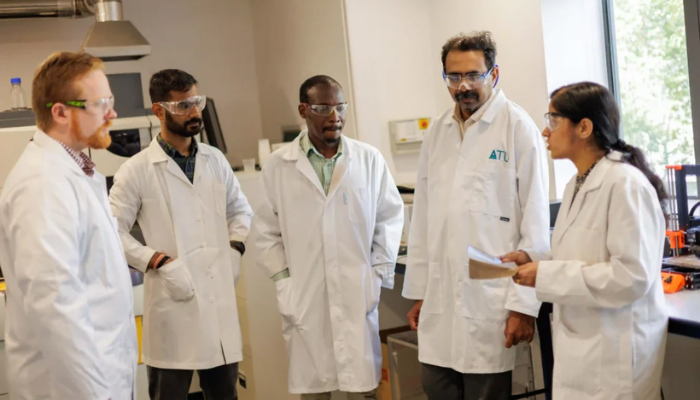ATU Discovers New Method for Printing on Flexible Textiles

Researchers at the Atlantic Technological University (ATU) in Ireland have recently developed a new 3D printing method that could impact the future of wearable technology. Dr. Aswathy Babu, the head of the team, alongside Professor Suresh C. Pillai, has created a way to directly 3D print functional polymers onto flexible textiles. This makes it possible to produce clothing that can generate and store its own energy, paving the way for self-powered electronics.
Their work was published in the Nano Energy journal, with a primary focus on the fabrication of textile-based triboelectric nanogenerators (T-TENGs). This new device converts mechanical motion, such as walking or stretching the fabric, into usable electricity. The researchers used a low-cost fused filament fabrication (FFF) printing process that deposited polypropylene, a triboactive thermoplastic, directly onto the conductive fabric. The result is a durable, patterned surface that bonds tightly to the textile and delivers a significantly higher energy output compared to other traditional manufacturing techniques.

One of the main challenges that come with wearable energy systems is the fact that there is often a weak bond between polymers and fabrics. Previous methods have often required adhesives or multi-step processes that reduced the durability and flexibility of the garment. The team at ATU’s approach eliminates these issues by producing washable and stretchable energy harvesters that can handle daily wear and tear. According to the team, this strong interfacial bonding is critical for maximizing the energy efficiency and usability of the tech.
The device developed by ATU has shown promising real-world applications. When integrated into textiles, the device successfully powers small electronics and can enable IoT-based touch sensing systems. This shows great potential for use in health monitoring, environmental sensing, soft robotics, and adaptive smart wearables. The researchers have also emphasized that their method is both scalable and cost-effective, making commercial deployment more feasible.
Professor Pillai remarked, “This research provides a pathway to develop truly self-sustaining wearable devices. By combining additive manufacturing with advanced material science, we are laying the foundation for a new generation of intelligent textiles that can generate energy while being flexible, washable, and user-friendly.”
The project is part of a €1.5 million collaboration funded by the UK Engineering and Physical Sciences Research Council and Research Ireland. Alongside ATU, the consortium includes the University of Glasgow, Heriot-Watt University, and the Tyndall National Institute. The overall shared goal is to harness human motion as a renewable energy source through triboelectric nanogenerators, making wearable technology both sustainable and practical.
What do you feel about wearable tech? How do you see these advancements changing the sector? Let us know in a comment below or on our LinkedIn or Facebook pages! Plus, don’t forget to sign up for our free weekly Newsletter to get the latest 3D printing news straight to your inbox. You can also find all our videos on our YouTube channel. Interested in more medical and dental 3D printing news? Visit our dedicated page HERE.
*All Photo Credits: ATU






